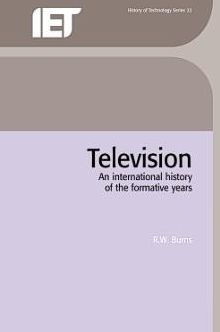This meticulous and deeply researched book presents a balanced and thorough international history of television from 1878 to 1940, considering the factors - technical, commercial and social - that influenced and led to the establishment of public services in many countries. Highly illustrated throughout, this is a major book in the study of history of science, technology and media.
This meticulous and deeply researched book presents a balanced and thorough international history of television from 1878 to 1940, considering the factors - technical, commercial and social - that influenced and led to the establishment of public services in many countries. Highly illustrated throughout, this is a major book in the study of history of science, technology and media.

Television: An international history of the formative years
676
Television: An international history of the formative years
676Hardcover

Product Details
| ISBN-13: | 9780852969144 |
|---|---|
| Publisher: | The Institution of Engineering and Technology |
| Publication date: | 06/30/1998 |
| Series: | History and Management of Technology |
| Pages: | 676 |
| Product dimensions: | 6.14(w) x 9.21(h) x (d) |
